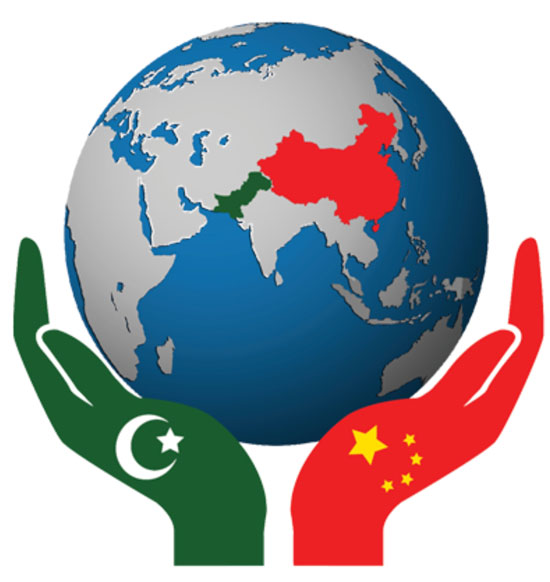By Maham Khan
The scale and unprecedented level of development that China has demonstrated over the past few decades since it opened up to the world has undoubtedly left many awestruck. China’s success story is a model for other developing countries to emulate. With regards to China-Pakistan relations, both the countries have supported each other and remained ‘all-weather friends’. As part of China-Pakistan Economic Corridor (CPEC), China has invested heavily in multiple sectors across Pakistan.
Recently, China has pledged investment to the tune of $1 billion in the social sector of Pakistan in order to relieve some of the burden on the economically haggard state.
During the Joint Coordination Committee meeting in Beijing last year on CPEC, a joint working group on socio-economic development was established. In February 2019, a 13-member group headed by Du Zhenli visited Pakistan to finalize projects and sectors which required investment.
For the first phase, six key areas were identified: education, agriculture, poverty reduction, skill development, healthcare, water supply and vocational training projects with a focus on lesser developed areas such as Gilgit-Baltistan, Balochistan, southern Punjab and Sindh. In healthcare alone, China has decided upon opening of six burn centres across Pakistan at locations such as Hyderabad, Sukkur, Bahawalpur, D. I. Khan, Swat and Quetta. This is in addition to the planned Pak-China Friendship Hospital in Gwadar costing $100 million, an emergency hospital under construction by the Chinese Red Cross Foundation in Quetta and collaboration between Chinese and Pakistani medical institutions on medical facilities, training, and scientific research. In education sector, besides 25,000 Pakistani students studying in China on grants and scholarships, five Confucius centres for learning Chinese, and establishment of the Pakistan Academy of Social Sciences in partnership with Chinese Academy for Social Sciences, the Chinese government has established schools such as the China-Pakistan Faqeer Primary school which helps educate the poor of the region where no primary school existed before. There is also the CPEC Consortium of business schools, an academic collaboration between universities from both states that jointly work on tasks as part of assisting the governments on CPEC projects. China has also invested $87 million in Khyber Pakhtunkhwa’s education sector to help digitize its curriculum, a project to be implemented across three phases and entirely funded by China.
Most importantly, Huawei, the Chinese technological giant, with the Higher Education Commission of Pakistan, has set up the Pakistan Education & Research Network, IT Research & Development Centres, Huawei’s Technical Support Centre and started a smart school project, equipped with latest technology.
Pakistan, as a chiefly agrarian economy with half the population dependent one way or another on the agriculture sector, unfortunately, has an antiquated system still dependent upon traditional methods of farming, irrigating and even storing, resulting in over one-third of annual postharvest loss. As China moves to outsource its food supplies in countries along the BRI, Pakistan stands to gain a lot from food exports to China. Higher yield crops, mechanized farming and proper storage facilities to that end are needed and China has thoroughly helped.
The Yuan Ping High Tech Agriculture Co. Ltd., a major Chinese hybrid seed production company, researched areas in Khyber-Pakhtunkhwa to develop heat-resistant rice, a crop that can grow in all ecological zones of Pakistan. The Company has also provided training to the Pakistan Agriculture Research Council on hybrid seed breeding and field management skills. Besides this, it is developing warehouses and storage facilities in Pakistan for post-harvest storage. The Chinese are also assisting in dairy and meat industries, with the friendly Khyber-Pakhtunkhwa Initiative aimed at exploiting the untapped dairy market of Pakistan for export to the Middle East. In the meat industry, the Kashi Mufeng Biological Technology Co has built cold storage centres which are transporting sea imports from Gwadar port all the way to mainland China. These investments could not have been timelier for Pakistan’s economy. Besides financial backing, the technological and technical know-how that the Chinese are bringing to all areas of Pakistan is crucial. Not only will this speed up the process, but will help enormously the poorer segments of society that would have otherwise never had access to such facilities.
In contrast to the assistance we have traditionally received from western countries – mostly monetary aid – support from China not only covers more ground, but it’s also detailed, intricate and touches each segment of our society, down to remote villages in Balochistan and Gilgit-Baltistan. While we have witnessed the Chinese economic miracle, we are more than hopeful it will be a success in Pakistan as well. (Courtesy: JISS)









